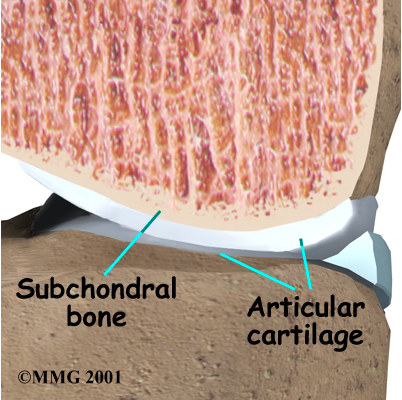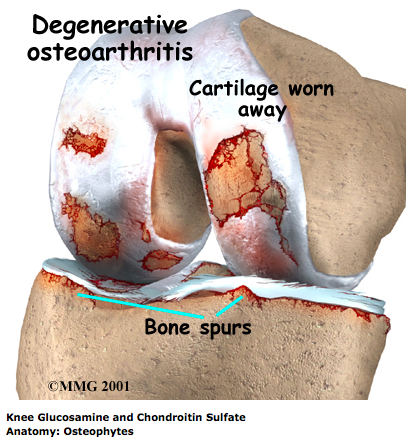Although glucosamine and chondroitin sulfate appear to have a useful place in treating knee OA, it is not recommended they be used alone without any other concurrent treatment. Managing knee OA works best when combined with physical therapy and lifestyle changes, such as weight loss, and increasing your overall physical fitness.
At STAR Physical Therapy we believe that the more you understand about OA, the more effective our treatment will be. For this reason, we will assist you in learning about OA so you can understand how best to manage your own symptoms.
Regular treatment at STAR Physical Therapy can significantly decrease the pain you feel from your OA knee. The use of heat as well as electrical modalities such as ultrasound or interferential current may be used to alleviate your initial symptoms. Ice may also be a useful depending on individual preference and the stage of the OA. Many patients instead find heat to be particularly soothing on their arthritic joint. Anecdotally, warmer weather often decreases the symptoms of knee OA, whereas cold weather may increase them. This is one reason why many older patients with OA in their joints flock to warmer climates when the colder seasons arrive. Massage to the muscles of the thigh or calf may also be used to aid in pain relief. Acupuncture is gaining popularity as a form of treatment for knee osteoarthritis, and as a result, more studies are being done to validate its effectiveness.
By decreasing the pain you have, it will make it easier for you to do range of motion and strengthening exercises. Knee range of motion often declines as OA progresses so exercises to maintain both the bending and straightening of the knee are important. Your physical therapist will teach you exercises that you can do in the clinic, as well as part of your home program. Using an exercise bike, whether stationary or regular, is a good way to maintain some of the range of motion of the knee and keep the joint loose. However, because maximum range of motion is not used during cycling, specific exercises that move the knee from full bending to full straightening are still required. There may be a small amount of discomfort as your knee nears the end of the bending or straightening range and this should be respected while still working through your maximum available range. If needed, your physical therapist will assist you in gaining range of motion by mobilizing the joint. This hands-on technique helps to encourage the knee joint to move gradually into the end ranges of motion.
In addition to range of motion exercises, your physical therapist will teach you strengthening exercises for the knee and hip. The hip is particularly important as it controls the alignment of the knee so weakness in this area in particular leads to undue forces being put through the knee during everyday activities such as walking or stepping up or down. OA can affect both sides of the knee joint but in many cases the knee cartilage wears down on one side (typically the medial or inside of your knee) quicker than the other side, which then significantly affects the alignment of your knee. Your physical therapist may use an electrical muscle stimulator on the muscles around the knee or hip to encourage the muscles in these areas to fire, which supports your joints, improves your alignment, and therefore takes the pressure off of your painful knee. Light weights or elastic bands may also be used to add increased resistance and build up the strength.
Alignment can also be improved by implements such as wedged foot orthotics or knee braces. Wedged orthotics change the ground forces that are applied upwards to your knee and specialized knee braces are designed to unload the pressure off of the most painful side of your knee. Another way to unload the pressure on your knee is to use a cane or walking stick. Research has shown that the use of a cane in the hand that is opposite to your painful knee will decrease the forces applied to your knee and may therefore decrease your pain. On that note, if you are carrying heavy goods, carrying them on the same side as your OA knee instead of in the opposite hand will put the least amount of pressure on your painful joint. Your physical therapist at STAR Physical Therapy will assess your knee and determine if your knee would benefit from the use of orthotics, a brace, or a walking aid, and will refer you to the appropriate health care professionals to assist you with obtaining these items.
If you are overweight, losing some weight can also take pressure off of your painful knee. Any extra weight that the body carries will put direct pressure on your OA knee and increase the amount of pain you feel and hasten the process of joint deterioration.
Your physical therapist will encourage weight loss through both dietary changes as well as strength training, and cardiovascular activities such as walking (if tolerable), stationary or ordinary cycling, or pool activities such as swimming or water aerobics. The pool is a particularly good venue to partake in cardiovascular activities for weight loss as well as perform many of the exercises your physical therapist prescribes for range of motion and strengthening. The water naturally takes some of the pressure off of your joint and therefore many patients with OA find the water particularly therapeutic especially if the water is warmer than usual public pool temperature.
The final part of our treatment will include exercises for your balance. As the result of any injury or pain the receptors in your joints and ligaments that assist with balance and proprioception (the ability to know where your body is without looking at it) decline in function. This is true with OA knees as well. Your physical therapist at STAR Physical Therapy will prescribe exercises for you to regain and maintain this balance and proprioception. This might include exercises such as standing on one foot or balancing with both feet on an unstable surface such as a pillow or a soft plastic disc. Depending on the stage of your OA and your ability, your physical therapist may even prescribe agility exercises such as gentle hopping or moving side to side.
Fortunately, most patients with knee OA who combine the use of glucosamine and chondroitin sulfate with our rehabilitation program at STAR Physical Therapy feel that their pain decreases, they are better able to manage their symptoms, and are also able to improve their activity level and quality of life. If, however, your knee does not respond as we would expect to the treatment we provide at STAR Physical Therapy, we will promptly liaise with your doctor regarding the best management plan to assist you.
STAR Physical Therapy provides services for physical therapy in Fairport and Rochester.
Portions of this document copyright MMG, LLC.


